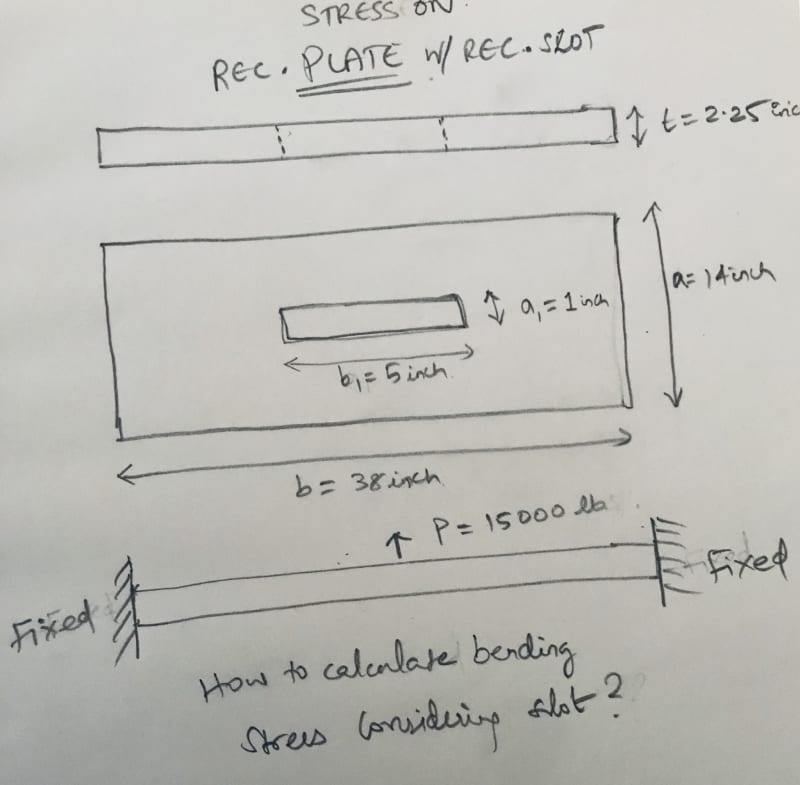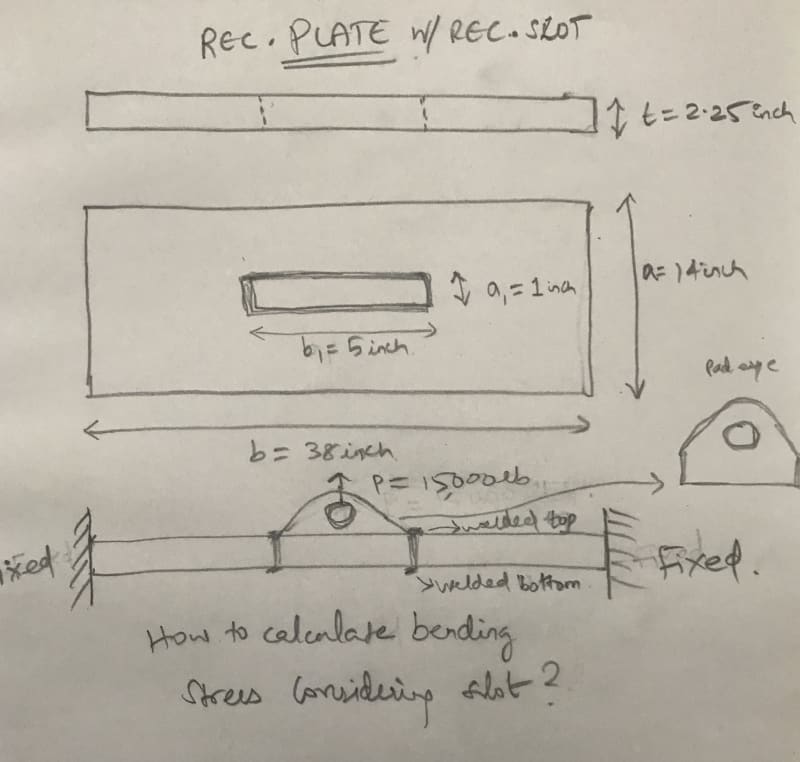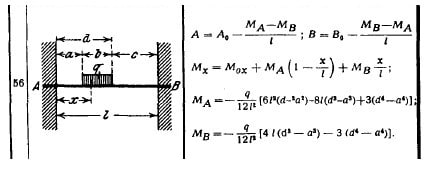Hanson Gill (OP) said:
The plate is bolted four bolts to the right and four to the left. So it’s not felxible.
No! Absolutely NOT.
The configuration drawn shows both sides "fixed" above and below the horizontal plate. A "fixed" end explicitly forces a certain pattern of bending and moment response in the Rourke book that force the application of specific equations. Use the wrong model of each end, you get the WRONG equations, and you get the WRONG solutions.
That stress and moment configuration drawn CANNOT exist with ANY KIND of bolted connections on the right and left sides.
Bolts are slightly flexible: Even "if" (and that is NOT shown) the four bolts in each end are screwed tightly into 4x horizontal tapped holes in both sides of the 2.5 inch thick horizontal late, that plate will deflect up in the center, will pull away from the wall at the bottom of the plate by a few thousandths, and will bend and compress into the wall at the top when loaded.
That movement will substantially change your theoretical stress model.
Worse, four bolts (in tapped holes on both ends) are very significant stress rise points that greatly change the stress model of your very small plate. Worse, 4x large bolts in a 2.5 inch thick are themselves significant stress risers into a plate at its now "weakest point". Even dowels or welded pins are better than "bolts" in the end when facing shear forces. (By the way, how did you calculate the shear forces across each bolts, and how did you determine a safe bolt diameter?)
Please. Get some help on this, you are not demonstrating the ability to analyze this plate.




